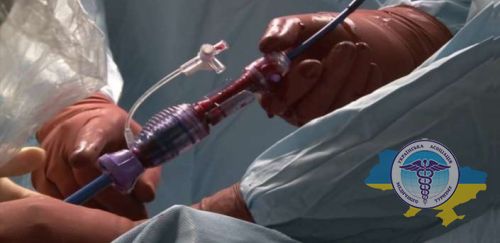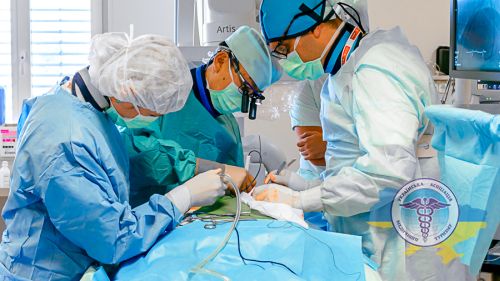Aortic valve replacement (operation TAVI) in Poland

Valvular heart disease is a fairly common pathology. With its development, only the operation can help the patient. More recently, in order to eliminate the defect, it was necessary to resort to open-heart surgery — an extensive intervention that can be dangerous, especially for debilitated or aged patients. However, now such patients received hope for a cure, thanks to the appear of a safer method, which is successfully used in many countries around the world. Polish heart surgeons have achieved particular success in this area.
The last 10 years, the operation of TAVI in Poland has become quite commonplace. This is a minimally invasive intervention with a catheter. For the first time, transcatheter aortic valve implantation in Poland was carried out in 2008 in Krakow. Since then, dozens of such operations have been performed, which gave many patients a chance for life.

Want to know how much the treatment costs?
Answer a few questions and get preliminary information about the cost of diagnosis and treatment!
How is the replacement of the heart valve in clinics in Poland performed?

The Polish Society of Cardiology for several years is working on a special program. Its purpose is to study in details the modern TAVI method used to treat the aortic valve. The prospects for its implementation in practical cardiac surgery are promising, therefore, much attention is paid to the development of the TAVI method in Polish clinics. So what is the operation TAVI?
Despite the difficult name, in technical terms, the operation is not too complicated. For its implementation a catheter is used - a long thin tube. It is moved through the vessels in the aorta directly to the aortic valve.
The operation consists of several stages:
- A small incision is made at the hip to gain access to the artery. Through it, doctors inject a catheter that moves the artificial valve to the right place;
- On the other hip, a catheter with contrast is inserted through the puncture into the vessel. Next, an X-ray is needed to follow the valve movement towards the heart along the aorta using contrast;
- At the next stage, a catheter with an artificial valve is inserted under the control of the X-ray unit;
- After the valve reachs the propriate place, tests are made in order to understand how it will function;
- If everything is OK, the artificial valve is fixed, and its own is pressed against the walls of the aorta.
This is a simplified description that will help you understand how heart valve replacement takes place in Poland.
What are the advantages of TAVI surgery?
Every year more and more doctors in Polish clinics are mastering the TAVI method. A number of reasons contribute to this. Compared with open-heart surgery, TAVI has many important advantages:
- Minimal risk of death or disability;
- Reducing the risk of paralysis, infection, bleeding after the procedure;
- The postoperative period of intensive care is generally up to 5 hours;
- If there are no complications, the patient leaves the cardiology center on the third day.
Especially such operations are recommended for elderly patients whose body can not cope with the loads caused by open-heart intervention.
What are the contraindications to the use of the TAVI method?
Patients undergo a full examination before surgery in Polish clinics. The presence of certain diseases and anatomical features are the contraindications for TAVI surgery.
The method cannot be used if:
- The arteries through which the catheter must be inserted are excessively constricted;
- The size of the aortic valve ring does not match the size of the artificial;
- There is a blood clot in the heart cavity;
- The patient suffered a myocardial infarction within the previous month;
- Severe renal failure.
Despite some contraindications, the TAVI method gives a chance for recovery to those patients who may not experience more traumatic types of operations. Its cost in Poland, although quite high, differs favorably from prices in other European countries.



